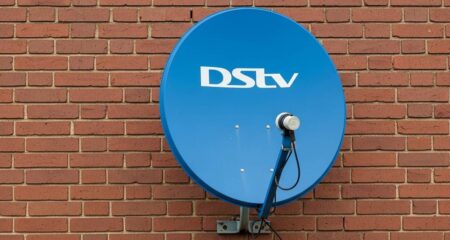
For most South Africans the choice of what to watch on television is limited to four free-to-air channels. Soon, though, all that will change.
SA is back on track to migrating terrestrial television broadcasts from analogue to digital, a process that was derailed last year when the department of communications decided to review the country’s commitment to the European standard for digital broadcasting.
Though the review set back the process several years, it should have a long-term benefit for local consumers. After the standards review, SA has chosen a more efficient and more modern version of the European standard.
Known as DVB-T2, the standard makes more efficient use of spectrum, allowing a wider range of choice in television broadcasts.
Gerhard Petrick, a representative of broadcasting industry body, the Southern African Digital Broadcasting Association (Sadiba), says DVB-T2 will give South Africans access to many more free-to-air channels than what was possible with the older version of the standard.
Free-to-air broadcaster e.tv has conducted a DVB-T2 trial in Soweto (with partner) M-Net. In the trial, it has offered residents nine active channels. Compared the single channel it broadcasts on analogue, plus one 24-hour news channel on satellite, it represents a significant increase in choice.
Slightly wealthier viewers who can afford access to M-Net’s terrestrial service will also not be disappointed. The broadcaster may also launch up to nine new channels when it begins providing digital services commercially.
It’s not known yet how many channels commercial broadcasters will offer. They may choose to reduce the number of standard-definition channels they offer and use some of the bandwidth to provide high-definition (HD) channels.
For now, HD is only available on DStv, the satellite pay-TV service owned by Naspers subsidiary MultiChoice. However, thanks to increased sales of HD televisions – even into less affluent households — there’s like to be strong demand for terrestrial HD channels.
Already, DStv rival TopTV, owned by On Digital Media, has said it will launch HD channels on satellite by the end of the year.
However, Petrick says much needs to be done before broadcasters can begin thinking about which channels they’ll offer, and how many will be in HD.
First, the department of communications, the SA Bureau of Standards and the broadcasting industry need to get together and decide how to build the decoders people will need to watch digital broadcasts.
“HD is likely to be a sticking point for many people in the industry,” says Petrick. “Putting HD into the decoders will make them more expensive and that may deter people from having the technology included.”
However, he says the basic design of the decoder can specify HD as an optional service, allowing some broadcasters to build HD-capable decoders and others to leave out the option and keep the costs down.
Once the work is done on the basic design of the decoders and SA Bureau of Standards has approved the specification, local manufacturers can start building them.
The country’s biggest decoder manufacturer, Altech UEC, is likely to be one of the companies building the terrestrial boxes. MD Rodger Warren says if all goes well decoders could be in retail stores nine months from now.
However, he believes it’s more likely that decoders will only be available to consumers in a year’s time.
He says there is a “world of opportunity” for consumers and decoders may even allow the device to be plugged into a modem, enabling access to the Internet.
For the average consumer, buying a decoder will not be too much trouble, and even with the new upgraded standard and HD included, the price of the box will be within the R700 target set by the department of communications.
For poorer households, paying R700 upfront to be able to watch digital TV could be problematic. However, the department has promised to subsidise the poorest households.
The actual subsidy and how it will be handed out to those that can’t afford the new device has not been set yet. However, the department of communications is expected to clarify the allocation of the subsidy before the year is out.
Though digital TV has clear benefits for consumers, Petrick warns there may also be pitfalls that consumers should be aware of. Much like when HD first came to SA, many companies sold older TVs that were not compatible with the technology.
Petrick says many sellers will probably try to convince consumers that they will need a new TV to watch digital broadcasts, when they only need to buy a decoder to have access to the service.
Sadiba plans to launch educational campaigns over the next few months to educate consumers on exactly what they will need, how they will be able to get it and when the services will be available. — Candice Jones, TechCentral
- Subscribe to our free daily newsletter
- Follow us on Twitter or on Facebook




